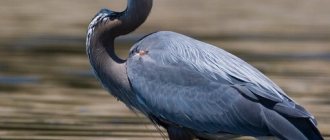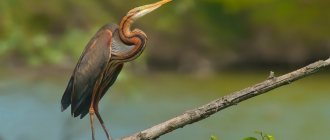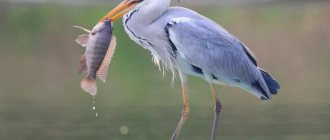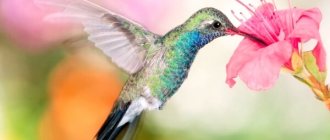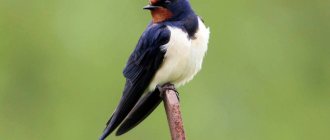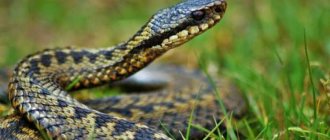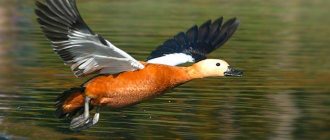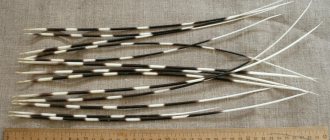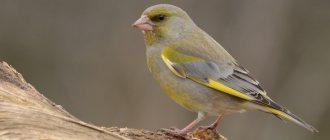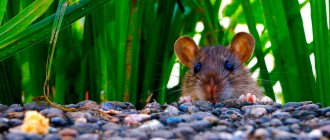- Wild animals
- >>
- Birds
The gray heron is one of the most common representatives of storks. It lives mainly on the territory of Belarus in swampy regions. This is a rather large and very beautiful bird. In addition to Belarus, it can be found in some regions of Eurasia and even in Africa. The name of the species translated into Russian means “ashen bird”.
Origin of the species and description
Photo: Gray Heron
The gray heron is a representative of the chordates, belongs to the class of birds, the order of stork-like, the family of herons, the genus of herons, the species of gray herons. In ancient times, until the mid-19th century, the bird was considered harmful, bringing misfortune. Its nests were always destroyed, and adults were killed in large numbers.
Members of a noble family considered falconry for the gray heron an interesting entertainment. Although they noted that they do not use its meat for food because its taste characteristics are not very high. As a result of such human activity, many regions of Europe previously loved by herons have lost this beautiful representative of flora and fauna.
Video: Gray Heron
Many Renaissance artists admired the natural beauty of this graceful bird and often depicted it on their canvases. You can also find her image in some still lifes as a hunting trophy. The image of this representative of birds is very common in Chinese folk art. On some souvenirs, Chinese artists depicted this bird along with a lotus as a symbol of success, joy and prosperity.
Under the influence of Chinese folk art, in which the heron often appeared, its image became very popular in central Europe and many Asian countries.
Habitat
Now let’s find out where the gray heron lives. This species is distributed in Asia and Europe: from the shores of the Atlantic Ocean, the Japanese Islands and to Sakhalin, in the south to Sri Lanka and North-West Africa, in the north to Yakutsk and St. Petersburg. Usually breeds in Madagascar. Winters in many regions of India, Indochina and Africa.
Probably, many of our readers well remember Nikita Mikhalkov’s soulful performance of the song in the film “Cruel Romance”, which contains the following lines:
“The furry bumblebee is for fragrant hops,
Gray heron - in the reeds..."
Indeed, in many regions, the heron of this species prefers to build nests in the reeds, for example in Turkmenistan. In addition, their nests can be seen in trees.
Appearance and features
Photo: What a gray heron looks like
The gray heron is a large and very beautiful, even majestic bird. Her height is 75-100 centimeters. The average body weight of one adult is 2 kilograms. Sexual dimorphism is practically not expressed. Female individuals have a lower body weight. The gray heron has a large, massive, elongated body. A distinctive feature of birds is their long, thin and very graceful neck. In flight, the heron, unlike other species of storks, does not extend it forward, but folds it so that the head practically rests on the body.
Birds have very long and thin limbs. They are gray in color. The limbs are four-fingered: three fingers point forward, one back. The fingers have long claws. The claw on the middle finger is especially long, as it plays an important role in hygiene procedures. From broken feathers on the bird's body, powders are formed, on which a special substance is formed that prevents the feathers from sticking together from the mucus of the fish eaten. It is the longest claw that helps birds lubricate their feathers with this powder.
The gray heron has long, rounded wings. The wing span is about two meters. This shape and size of the wing are perfectly adapted to long flights over long distances. The bird is naturally endowed with a sharp, long and very powerful beak. He helps her get food and protect herself from enemies. With such a beak it is capable of killing rodents the size of a small rabbit. The length of the beak reaches 15-17 centimeters in some individuals. The beak can be of different colors: from light and pale yellow to dark brown.
The plumage is loose and at the same time quite dense. The color scheme is dominated by gray, white, and various shades of ashy. The upper part of the body is colored darker than the lower part. The back of the gray heron's head is often decorated with a crest of long, dark feathers.
Flight to wintering
These birds fly at quite a high altitude, not only during the day, but also at night. The autumn migration usually takes place at dusk, after sunset, and during the day the flocks stop to rest and eat. When taking off, the great gray heron flaps its wings very quickly, and its legs hang freely in the air. Having gained the required height, the bird picks up its legs and then flies smoothly, with measured movements of its wings. Sometimes she floats in the air for a short time.
In flight, flocks of herons form a straight line or wedge. Gray herons nest in colonies, in which there are up to twenty nests. In Europe, where these birds are now protected, there are huge colonies consisting of thousands of nests. However, cases of separate nesting of pairs are not uncommon. Sometimes colonies are mixed: other species of herons, spoonbills, and ibises settle in them. In the central zone of our country, where other species of herons and ibises are not found, monospecific colonies are formed.
The gray heron can be active at any time of the day; they cannot be called either diurnal or nocturnal birds. During long-term observations, it was established that the time of these birds is distributed as follows:
- 77% of the time they hunt and are awake;
- Birds sleep 5.9% of the time;
- 16.6% are engaged in hygiene procedures.
Interesting data, isn't it? For a significant part of its life, the heron stands motionless, with its neck retracted, on one leg, and the other tucked in.
Gray herons have a well-developed system of visual signals. A long and flexible neck can express different emotions. For example, when threatening an enemy, a heron arches its neck, as if preparing to attack, and raises the crest on its head. Usually this pose is accompanied by a threatening cry. When birds greet each other, they quickly click their beaks. This clicking sound can also be heard during mating rituals.
When resting, the heron hides its head between its shoulder blades. Despite its rather large size, the heron is not easy to spot in natural conditions. A not very experienced and attentive researcher will notice it only when he gets very close to it. At this moment, the heron straightens its neck, loudly pronounces “krak” and immediately soars into the sky.
Where does the gray heron live?
Photo: Gray Heron in Russia
The bird's habitat is quite large. Regardless of the region, it always settles near bodies of water. The total habitat area of birds is about 63 million square kilometers. Birds are distributed over most of Europe, Asia and in certain regions of the African continent. In Eurasia, herons are distributed everywhere, right up to the gray taiga. The exception is deserts and areas with high mountains.
Geographical regions of the gray heron:
- Mediterranean coast;
- Southeast Asia;
- Greater Sunda Islands;
- Belarus;
- Maldives;
- Sri Lanka;
- Madagascar;
- individual regions of Russia.
Gray herons are also found in mountainous areas in regions where the mountain height does not exceed 1000 meters above sea level. Birds always settle near fresh water bodies, in the shallow waters of which they obtain food. Herons live in nests that they build independently after creating a pair. They are attached to these nests for most of their lives, since even those populations that tend to migrate return to their homes again.
Birds that live in cold climates migrate with the onset of cold weather to warmer countries. With the onset of spring they always return to their native lands.
Now you know where the gray heron is found. Let's see what this bird eats.
What does the gray heron eat?
Photo: Gray Heron Bird
The main source of food is fish. In former times, it was believed that birds impoverish the flora and fauna of water bodies by eating huge amounts of fish. In this regard, they were destroyed in large quantities. However, today it has been proven that herons, on the contrary, bring benefits by cleaning water bodies from fish infected with parasites.
It is noteworthy that each individual develops its own method of obtaining food during its life. Most often, they enter the water and, standing on one leg, wait motionlessly for an opportune moment to catch food. Some individuals spread their wings, thus shading the water space and closely examine what is happening under their feet. It eats birds that simply wander along the coast and look for prey.
As soon as the bird sees prey, it stretches its neck with lightning speed and grabs it with its beak across the body. Then, with an instant throw, he throws it over and swallows it. If the prey is large, then the heron first divides it into parts. In this she is also greatly helped by her powerful beak, which easily breaks bones and crushes prey.
Food supply of the gray heron:
- shellfish;
- crustaceans;
- various types of fish;
- amphibians;
- freshwater;
- large insects;
- mice;
- water rats;
- small animals;
- moles.
Herons can steal food from other animals. If human settlements are located nearby, they may well feed on food waste or products from the fish farming industry.
Features of character and lifestyle
Photo: Gray Heron in flight
Depending on climatic conditions, the gray heron leads a nomadic or sedentary lifestyle. Birds living on the territory of the Russian Federation and Belarus always fly to warmer countries with the onset of the first autumn cold snap. This is due to the fact that the bird will not be able to provide itself with food in harsh winter conditions.
Bird migration occurs in small groups. In rare exceptions, the number of these flocks exceeds two hundred individuals. There are practically no single individuals encountered on migration. During the flight, they fly at great heights both day and night.
When living in their usual territory, they settle in groups, nest in separate colonies, forming several dozen nests in a relatively small area. Birds tend to form colonies with other species of storks, as well as other species of birds - storks, ibises.
The gray heron is not active at a strictly defined time of day. They can be very active both day and night. Most of the time they are awake and hunting. They also spend a lot of time cleaning their plumage.
Lifestyle
Herons are very social birds. They live in large colonies and willingly share territory with other birds. Sometimes even small predators, such as rooks, peregrine falcons and kestrels, coexist with them. But these groups are unstable, and easily grow or disintegrate.
Heron habitats
Herons do not live except in Antarctica and very circumpolar regions. Otherwise, they are found on all continents and even on islands. The habitat of each species is different.
Photo: photographyinspired.com
Diet
The heron walks through shallow water, looks out for its prey and attacks it with lightning speed even under the water. They masterfully know how to deceive the victim by freezing or moving their fingers. The diet is based on fish, shellfish, toads, and tadpoles. Herons also eat insects, crustaceans, small rodents, moles and rabbits, and even chicks.
Photo: shortform.com
Wintering
Herons from temperate latitudes are forced migratory birds. But southern and tropical species lead a sedentary lifestyle. The migration period begins at the end of September, and they return home in small groups in the spring.
Photo: pl.pinterest.com
Cuckoo (50 photos): description of the bird, habitat and what it eats
Social structure and reproduction
Photo: Great Gray Heron
Sexual maturity is reached by birds at the age of 1-2 years. By nature it is a mohogamous bird.
Interesting fact: During the mating season, the beak and all parts of the body that are not covered with feathers become bright orange or pink. This trait is characteristic of both males and females.
In those regions where the climate is cold and birds migrate to warmer countries for the winter, they build nests immediately after returning to their homeland - at the end of March, beginning of April. In warm countries, where birds do not need to migrate, there is no pronounced migration and no connection to the time of year.
The construction of the nest begins with the male individual. Then he calls the female for help: he spreads his wings, throws his head back and makes croaking sounds. When a female approaches him, he chases her away. This procedure is repeated several times. When the male finally accepts the female, a pair is formed, which together completes the nest. It is most often located on tall trees, has a height of 50-70 centimeters, a diameter of 60-80 centimeters. Birds are incredibly attached to their nest and, if possible, use it for many years.
Each female lays from 1 to 8 eggs. Most often, there are 4-5 of them. They have a shape pointed on both sides and are bluish-green and white in color. After laying eggs, the birds incubate together for 26-27 days. The chicks are born completely naked and helpless. They begin to acquire feathers from the second week of their life. The parents alternately feed the chicks with food that they regurgitate from their own stomach. Feeding is carried out three times a day. Some chicks get less food. In this case, stronger and larger chicks take food from the weaker ones, and the weak ones in this case most often die.
At three months of age, the chicks begin preparing for independent life. They learn to fly and eat adult food. The average life expectancy of a bird under favorable conditions is 17-20 years.
Baby animals
Let's start with pets. They catch the eye of children more often, and therefore arouse greater interest.
Let's look at what a baby sheep is called. Many people living in cities do not even realize that sheep and ram are one type of animal, only female and male. Their baby is not called a ewe or lamb, but a lamb.
This is interesting! The word lamb comes from the Latin agnus. In the Old Church Slavonic language, a baby sheep and ram sounds like a lamb. The name of the animal contained the root “yagn”. Later, the suffix “enok” was added to it, which denotes a reduced form. Hence the name - lamb.
Pig
Pigs are one of the first animals to be domesticated by humans. They belong to the order Artiodactyls. They supply people with meat and lard. The female pig is called a sow or pig, and the male is called a boar or boar. But their baby is called not a pig or a hog, but a piglet.
This is interesting! The Slavs called a male pig a poros. The addition of the suffix “enok”, again, means a reduced form. Hence the name - piglet.
By the way, the birth of piglets is called farrowing, and a pregnant pig is called gestation.
Cow
Cows have been tamed by humans since ancient times. They give people meat and milk. The male cow is called a bull, and the baby is called a calf. Another example of the fact that children and parents have different roots.
Experts still cannot figure out where the word calf came from; there are only guesses. One of them is that among the ancient Slavs this word meant “born”, but cows bear their offspring for 9 months.
Turkey
America is the homeland of turkeys. But in recent centuries, this bird has been grown in European countries.
This is interesting! Few people know that turkeys are named after their homeland. Previously, America was called the West Indies, so the name of the birds is translated as Indian rooster.
In this case, parents and their children have the same root. A female turkey is called a gobbler or turkey, and her baby is called a poult.
Rabbit
Another domestic animal is the rabbit. The female is called a rabbit, the male is called a rabbit, and their baby is called a bunny.
Rabbits are raised for meat, hides and fur. The Angora breed of animals has valuable fur; beautiful and expensive fur coats are made from it.
Scientists also test drugs on rabbits before releasing them for sale. Not long ago, dwarf breeds of rabbits were bred; now they are kept in apartments instead of hamsters and guinea pigs.
Natural enemies of gray herons
Photo: Gray Heron in nature
The gray heron is a fairly large bird, which is naturally endowed with a sharp and very powerful beak. Due to this, she is able to defend herself against many enemies. However, it often becomes prey to larger and stronger predators.
Natural enemies of the gray heron:
- fox;
- jackal;
- raccoon dog;
- water and amphibian rats;
- predatory species of birds;
- marsh harrier;
- magpie.
Natural enemies not only hunt adult birds, but also destroy nests by eating chicks and eggs. Herons are also very susceptible to various diseases, especially parasites. This is facilitated by lifestyle and nutrition. The main food source is fish and crustaceans. They are the carriers of a large number of parasites. By eating them, the heron automatically becomes an intermediate host of a large number of parasites.
The decline in numbers is facilitated by the low survival rate of chicks in the first year. It is only 35%. From the second year, bird mortality begins to gradually decrease. Humans are also one of the main and significant enemies of the gray heron. Its activities lead to pollution of the natural habitat, as a result of which the bird dies. Pesticides contaminate the swamps and water areas near which it lives.
Another reason for the decline in the number of birds is a change in climatic conditions. A cold, prolonged spring with snow and prolonged downpours also contributes to the death of birds, which are completely unsuited to survival in such conditions.
